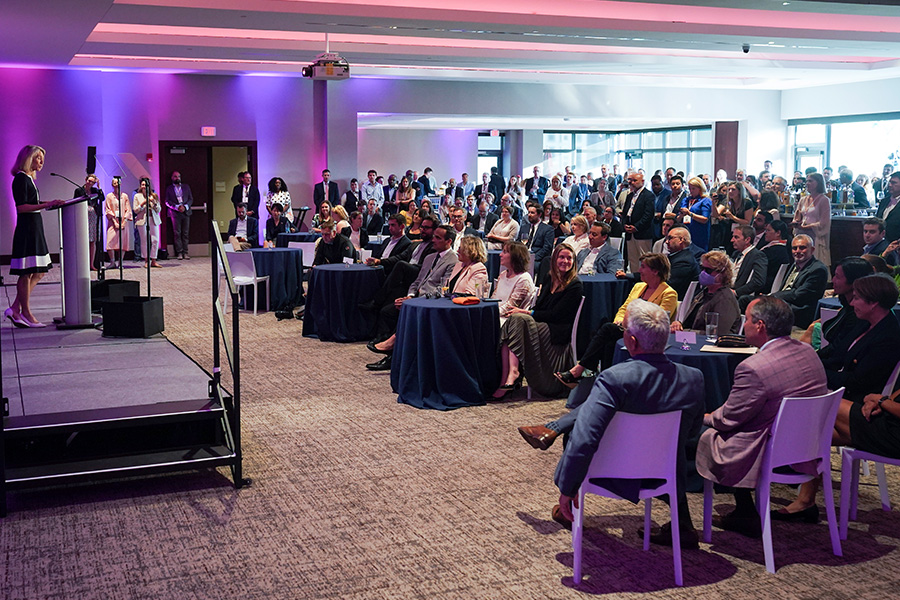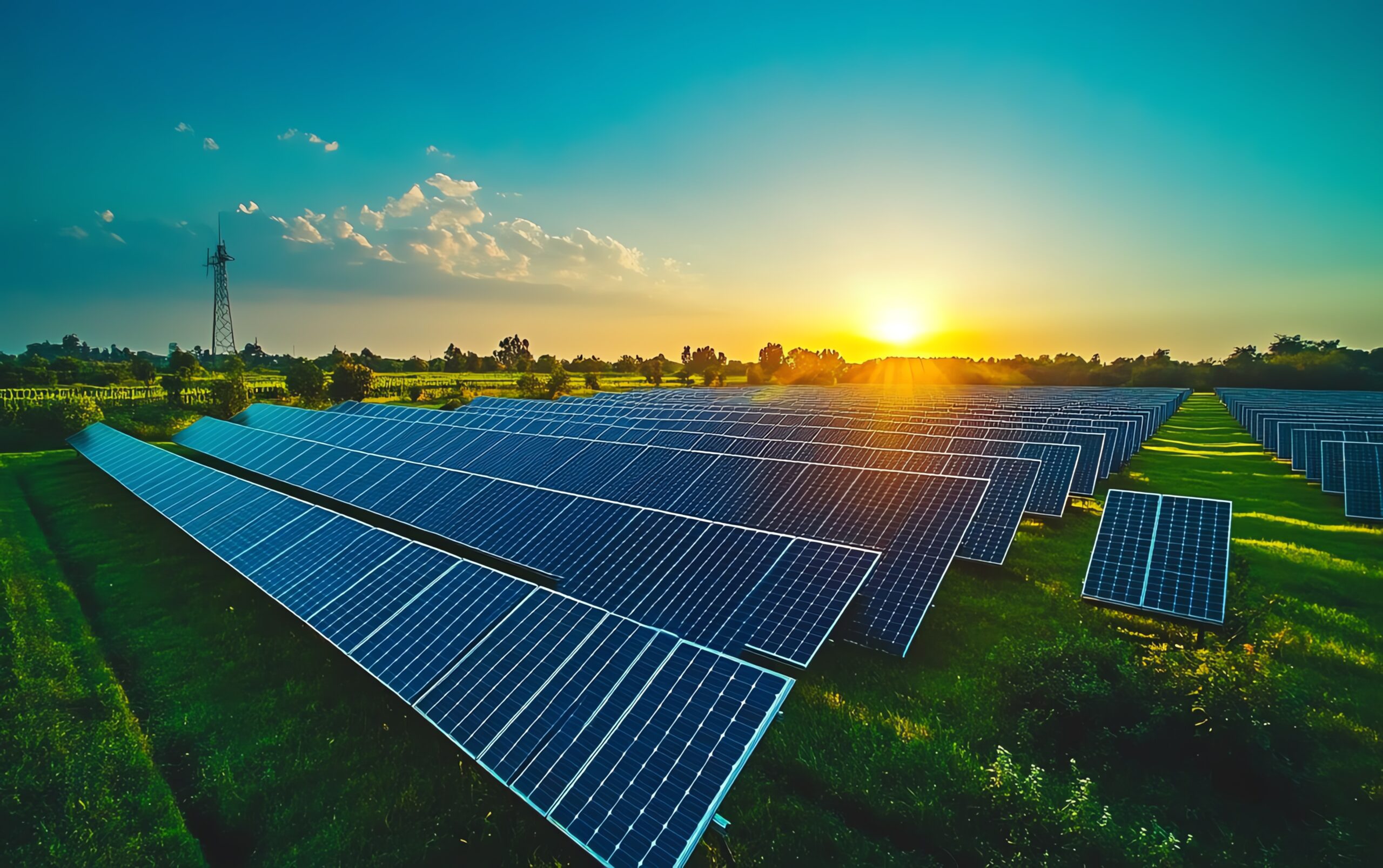Addressing the Systemic Challenges of the Energy Transition
Innovations in climate technology have made remarkable progress in recent years, playing a crucial role in driving the energy transition. Yet, many executives recognize that their efforts and those of their partners across value chains are not progressing quickly enough to meet net-zero goals within their committed timelines. This challenge stems mainly from the fact that while individual climate technologies may seem promising, they exist within a complex “system of systems.” It is only through systemic change that we can meaningfully move the needle.
A recent panel discussion during ClimaTech 2024, featuring industry leaders from diverse sectors, including energy, research, and finance, delved into the challenges and opportunities inherent in achieving a more systemic energy transition. The panel emphasized the need for greater collaboration and a comprehensive approach to the interconnected elements that drive decarbonization.
The Need for Systemic Change in the Energy Transition
Geoff Tuff, Global Sustainability Leader for Energy & Industrials at Deloitte Consulting LLP, opened the conversation by stressing the importance of viewing the energy transition as a systemic problem. Alongside fellow panelists—Chris Greig, Senior Research Scientist at Princeton; Kate Hardin, Executive Director at Deloitte’s Energy and Industrials Research Center; and Lori Heinel, Executive Vice President at State Street Global Advisors—Geoff explored how technology, policy, and investment decisions need to be integrated across sectors to achieve the ambitious net-zero goals set by governments and organizations around the world.
Geoff emphasized the need to move beyond isolated technological advancements and focus on how these technologies interact within larger systems. While technologies like renewable energy and carbon capture may show promise individually, only when they work in unison within a broader system can they help meet global climate goals?
Chris Greig on Pathways to Net Zero
Chris Greig shared insights from his work on the Net Zero America project at Princeton, which evaluated various pathways to achieving net-zero emissions. He explained that while it is technically feasible to reach net zero using existing technologies, the scale of the challenge is enormous. His team identified capital-intensive pathways that demand substantial infrastructure development, including wind and solar power, battery storage, clean hydrogen, and carbon capture and storage (CCS).
To achieve these goals, we would need to build 3 terawatts of wind and solar energy, expand transmission infrastructure by three times, and develop billions of tons of clean hydrogen. This scale of development requires a level of investment three to five times greater than traditional energy systems, which poses significant challenges for financing the energy transition.
Chris also pointed out that while the technological capabilities to reach net zero exist, building the required infrastructure at the necessary pace remains a formidable challenge. The US, in particular, faces an unprecedented task in scaling infrastructure development as rapidly as needed—an effort that could outpace the experience of most other nations, except possibly China.
Despite these challenges, Chris remains optimistic about the US’s role in the energy transition. He highlighted growing policy support, particularly in initiatives like the Inflation Reduction Act, which are accelerating the adoption of clean technologies. Still, he expressed concerns about the slow progress of certain technologies, such as clean hydrogen and CCS, and stressed the importance of accelerating their development.
Kate Hardin on Cross-Sector Collaboration
Kate Hardin discussed the importance of cross-sector collaboration in driving the energy transition. At Deloitte, she has focused on exploring how different sectors, including industrial manufacturing, power utilities, and critical minerals and mining, are interconnected. These sectors must decarbonize together for the energy transition to succeed.
She emphasized that investments in clean tech, driven by policies such as the IRA, have spurred significant growth in US energy storage and clean tech manufacturing. However, challenges remain, particularly in the supply of critical minerals such as lithium, nickel, and cobalt, essential for clean tech production, which the US continues to import heavily.
Kate explained that decarbonization must be approached as an integrated system, addressing the interdependencies between sectors. For example, supply chain issues related to critical minerals must be addressed alongside clean energy policy reforms to create a cohesive and sustainable transition to a low-carbon future.
Overcoming Timeframe Challenges in Climate Tech
One pressing challenge discussed during the panel was how individuals and businesses can justify investments in climate technologies when the timeframe for making improvements, such as installing solar panels, may be limited. Geoff Tuff raised the question of how homeowners could reconcile the upfront costs of solar panels with the long-term rewards, especially if they plan to move within a few years.
Lori Heinel responded by explaining that while these technologies come with substantial initial costs, the long-term savings on energy bills make them justifiable investments. However, for individuals who won’t stay in their homes long term, the terminal value—the potential increase in property value when selling—becomes an important consideration. Companies like Google are already developing technologies to help homeowners evaluate the feasibility of solar panels based on factors like local weather patterns, helping to make the long-term payoff more transparent.
Lori further discussed the role of transparent pricing, stable regulatory frameworks, and consistent tax policies in encouraging investments in climate technologies. With clear data on the real-world impact of clean tech, businesses, and homeowners can make more informed decisions, reducing the risk of sudden policy shifts and ensuring more reliable returns on investments.
The Role of Finance in Bridging the Gap
Geoff turned the discussion to the role of the financial sector in scaling climate technologies. He asked Lori how the financial industry is adapting to the unique challenges of financing the energy transition, especially when many financing solutions for emerging technologies don’t yet exist.
Lori pointed out that public-private partnerships and regulatory frameworks like the IRA have made significant capital available for clean tech initiatives. However, to attract more private investment, the regulatory environment needs to be more stable and predictable. Programs that support beta-testing of new technologies, such as those seen in the past with renewable energy, can act as catalysts for wider deployment.
The Need for Coordinated Systems and Master Planning
Kate Hardin shared her thoughts on addressing the energy transition as a “system of systems,” where interconnected elements such as financing, workforce development, technology, and business models must all align to support decarbonization. For instance, addressing workforce skills in manufacturing and the supply of critical materials must happen in parallel with advancements in clean tech production. This requires effective coordination among governments, businesses, and educational institutions.
Geoff and Kate emphasized the importance of adopting a more coordinated approach to the energy transition, where every sector and stakeholder works together to achieve a common goal. This approach would align policies and efforts across federal, state, and local levels, ensuring the energy transition moves forward at the scale and speed necessary to meet global climate targets.
The Impact of Deregulated Energy Markets
The discussion also touched on the implications of deregulated energy markets in the US, where nearly two-thirds of the energy market operates outside traditional regulatory frameworks. While deregulation can introduce price volatility, Lori argued that clean energy technologies, such as solar power, are now so cost-competitive that they remain attractive investments despite market fluctuations.
She also pointed out that introducing a true price on carbon would provide stronger economic incentives for the transition to clean energy sources, making it easier for businesses and homeowners to switch to low-carbon alternatives.
Conclusion
The panel discussion highlighted the critical importance of systemic change, collaboration, and coordinated efforts to overcome the complex challenges of the energy transition. We must integrate technological advancements, policy reforms, investment strategies, and workforce development into a unified effort to meet the ambitious climate goals set for the coming decades. Only through systemic thinking and cross-sector collaboration can we ensure the energy transition progresses at the scale and speed necessary to secure a sustainable future for all.
View full session from ClimaTech 2024 here:








